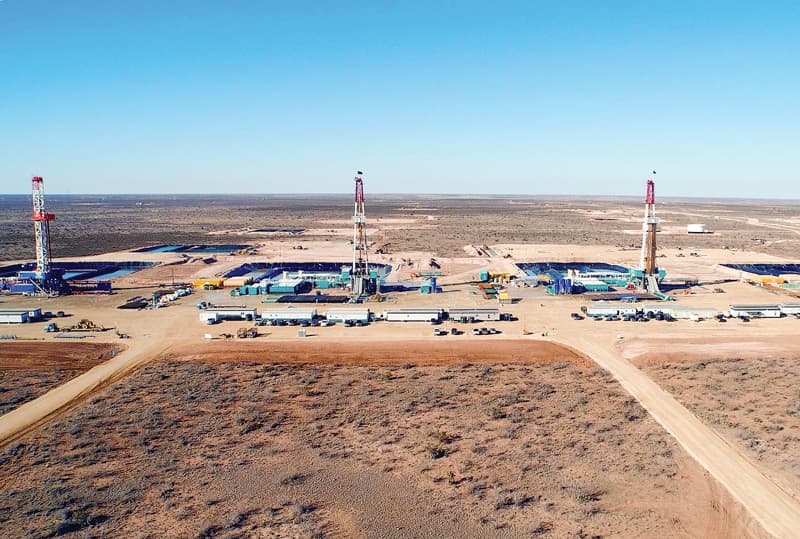A “tsunami”, a “flooding of Biblical proportions” and an “onslaught of supply”: Houston shale executives are trying out different superlatives to describe what’s coming.
In less than a decade, US companies have drilled 114,000 oil wells in the Permian basin of West Texas and a slice of New Mexico. Many of them would turn a profit even with crude prices as low as $30 a barrel — a scenario that gives OPEC nightmares.
OPEC’s bad dream only deepens next year, when Permian producers expect to iron out distribution snags that will add three pipelines and as much as two million barrels of oil a day.
The US energy surge presents OPEC with one of the biggest challenges of its 60-year history. If Saudi Arabia and its allies cut production when they gather on 6 December in Vienna, higher prices would allow shale to steal market share. But because the Saudis need higher crude prices than US producers to make money, OPEC can’t afford to let prices fall.
Even so, Saudi Arabia’s output swelled to a record this month, according to industry executives. That means the three biggest producers — the US, Russia and Saudi Arabia — are pumping at or near record levels.
A similar scenario unfurled in 2016, when Saudi output rocketed just before OPEC agreed to cuts. This time the cartel’s 15 members, and allies including Russia, Mexico and Kazakhstan, will discuss the possibility of their second retreat from booming American production in three years.
OPEC helped create the monster that haunts its sleep. After it flooded the market in 2014, oil prices crashed, forcing surviving US shale producers to get leaner so they could thrive even with lower oil prices. As prices recovered, so did drilling.
Now growth is speeding up. In Houston, the US oil capital, shale executives are trying out different superlatives to describe what’s coming. “Tsunami,” they call it. A “flooding of Biblical proportions” and “onslaught of supply” are phrases that get tossed around. Take the hyperbolic industry talk with a pinch of salt, but certainly the American oil industry, particularly in the Permian, has raised a buzz loud enough to keep OPEC awake.
Only a few months ago, the consensus was that the Permian and US oil production more widely was going to hit a plateau this past summer. It would flat-line through the rest of this year and 2019 due to pipeline constraints, only to start growing again — perhaps — in early 2020.
If that had happened, Saudi Arabia would’ve had an easier job, most likely avoiding output cuts next year because production losses in Venezuela and sanctions on Iran would have done the trick.
Instead, August saw the largest annual increase in US oil production in 98 years, according to government data — adding nearly 3 million barrels, roughly the equivalent of what Kuwait pumps, compared to August 2017. Total output of 15.9 million barrels a day was more than Russia or Saudi Arabia.
The growth was possible because oil traders found a workaround for the dearth of pipelines, using rail cars and even trucks to ship barrels out of the region. But pipeline companies unexpectedly increased capacity, adding chemicals known as 'drag reduction agents' to increase flow. A new pipeline came online earlier than anticipated, and with three more expected between August and December next year, production is poised to soar.
Knowing that more transportation would be available next year, Permian companies are drilling wells but, for now, aren’t fracking many of them. Those wells are becoming a reservoir of ready-to-tap production once the new pipelines — Gray Oak, Cactus II and Epic — come online.
The only obstacle for another surge is export capacity, as most of the incremental output will need to ship overseas. With terminals nearly full, Permian barrels could end piling up in the ports of Corpus Christi and Houston.
Even so, few in Houston, or in Midland, Texas, the hub of the Permian region, believe that growth will be anything but gangbusters next year because of the clearing of transportation bottlenecks.
By the end of 2019, total US oil production — including so-called natural gas liquids used in the petrochemical industry — is expected to rise to 17.4 million barrels a day, according to the US Energy Information Administration. At that level, American net imports of petroleum will fall in December 2019 to 320,000 barrels a day, the lowest since 1949, when Harry Truman was in the White House. In the oil-trading community, the expectation is that (perhaps for just a single week) the US will become a net oil exporter, something that hasn’t happened for nearly 75 years.
Saudi officials concede that the tsunami is coming. OPEC estimates that to balance the market and avoid an increase in oil inventories, it needs to pump about 31.5 million barrels a day next year, or about 1.4 million barrels a day less than what it did in October.
Global oil demand has so far absorbed the extra US crude barrels, limiting the impact on prices. The loss of output from Venezuela and to a lesser extent, Iran, even allowed Saudi Arabia, Russia and a few others to boost production. But for the cartel, US shale remains as intractable as in the past.

